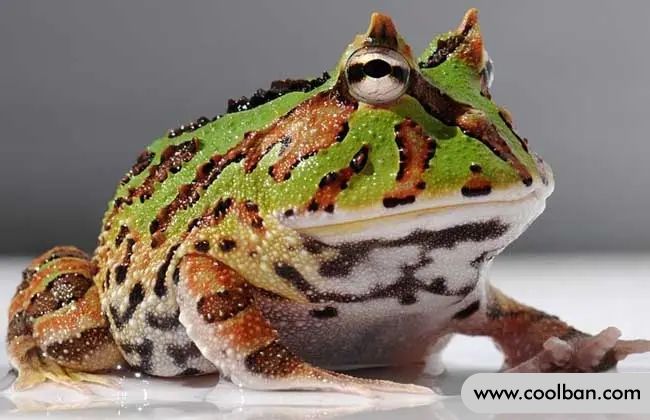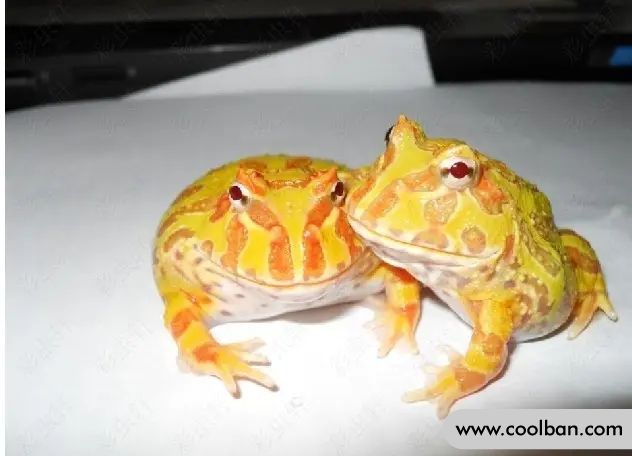Feeding knowledge of Amazon Horned Frog
Amazonian horned frogs are the most prestigious subspecies of horned frogs, not because they are the most common (most commonly the bell-horned frog) but because they are expensive, but even so pet lovers love Amazon horned frogs Not less, but more people began to pay attention to such animals.
From the name, we can guess the hometown of the Amazon Horned Frog. They used to live in the Amazon basin, but due to human factors, Amazon horned frogs can now be seen all over the world. He is a large frog, some individuals can even grow up to 20 cm. Aside from their size, their protruding horns and body patterns are enough to distinguish them from other horned frogs.

Morphological characteristics of Amazonian horned frogs
The Amazon horned frog is easy to distinguish from other frogs, and we can judge it according to the following three points:
1. Large in size, belonging to large frogs, the length of adult frogs is generally more than 7cm;
2. There is a pair of long horns on the head;
3. There are unique patterns on the body. If the frog you see doesn't match the points above, it's almost certainly not an Amazonian horned frog.
Like many animals, female Amazonian horned frogs are larger than males, but males have more body colors, and males may appear brown, gray, green, or even orange, while females are mostly brown. If you want to keep Amazon horned frogs, you can usually only buy females that are not as brightly colored, and because of gender controls in exporting countries, there may be fewer reproductions.

Feeding knowledge of Amazon Horned Frog
Amazonian horned frogs do not like to be exposed to direct sunlight. When the sun is too strong, they will find a dark corner to hide. So under normal circumstances, it will not come out during the day. They don't come out to hunt until sunset in the evening. Don't forget to set up a dark spot for Amazonian horned frogs if you also have plants in your breeder's tank.
Because Amazonian horned frogs are not very active during the day, they do not need to be fed during the day, usually early morning and early evening are the best feeding times. He will eat many animals, including insects, lizards, frog larvae and small fish. Breeders can choose food according to their actual situation. If you do not eat or vomit, the breeder should immediately find out the reason and solve the problem in time.
In addition to feeding work, the cleaning of the frog tank should also be done well - the water in the frog tank should be replaced immediately once there is a problem, the food residue of the Amazon horned frog in the frog tank should be quickly removed, and the feces should also be cleaned up as soon as possible . If you don't have that patience, then you'd better not keep an Amazon horned frog, or the trivial tank cleanup will break you.
A final note for breeders is that Amazonian horned frogs are not suitable for polyculture, either conspecific or other frogs, as it is likely to prey on smaller species or other frogs for food.

Amazon Horned Frogs are voracious eaters. They open their mouths and swallow them as long as they can get food, so under normal circumstances, breeders don't have to worry about them not eating. Although Amazonian horned frogs are foodies in people's impressions, in fact, they also have times of refusal to eat - when their living environment suddenly changes, they will stop eating. If breeders can't get them to start eating, they're likely to starve to death.
In their natural environment, Amazonian horned frogs are not aggressive hunters, they hide in one place and wait for their prey to appear before starting to hunt. As long as it is a smaller creature, it becomes their food. The variety of food also reduces the burden on breeders, who can try to choose foods that are easy to prepare, such as some small insects, earthworms, and even frogs.

Of course, the food of the Amazon horned frog must be moving, otherwise it will not arouse their appetite. If you don't feed them live animal food, you can use tweezers to shake the food back and forth in front of them, and they will basically swallow the food when stimulated. He's not very good at controlling his food intake, they really hang out, so you can't feed them too much. In addition, there must be certain rules for feeding, such as feeding once every two or three days, there should be no situation of not feeding for four or five days.
Occasionally, for various reasons, breeders will give some frog food. Due to the uneven quality of frog food on the market, breeders need to do a good job in identification. Usually, as long as the environment is well arranged and the feeding work is done well, the survival rate of the Amazon horned frog is still very high.
